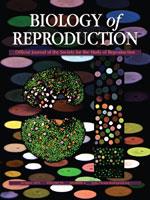Men are notable for low sperm production, relative to that of other large mammals, and often inferior morphology and motility of their spermatozoa. The extent to which temperature plays a role in this picture has been a moot point. However, animal experiments suggest that an increased scrotal temperature of approximately 4°C brought by inguinal clothing has a negative impact on the germinal epithelium and on the epididymis in man. In two animal species with inguinal testes, their transposition to the abdomen, raising the testis temperature by a modest approximate 1.5°C brought reduced sperm production and abnormalities of spermiogenesis (distorted sperm nuclei, shared acrosomes), a picture seen commonly in man alongside morphologically normal spermatids. Reflection of the scrotal epididymis to the abdomen in laboratory animals did not inhibit sperm maturation there, but the consequences of this for other epididymal parameters are mirrored in several features seen in man. In addition to the typically puny form of the human cauda, these include often rapid epididymal sperm transit, rapid capacitation in vitro, a poor sperm reserve (as reflected in the steep decline in sperm numbers in successive ejaculates), and not least, the cauda's failure to maintain the viability of spermatozoa there (reflected in both their mixed potential for motility and the negative outcome of abstinence). Because the number of competent spermatozoa inseminated relates to prompt fertilization and/or incidence of pregnancy in some animal models, the negative effects of scrotal temperature may be an important factor in the need for an average of approximately five cycles of unprotected intercourse in order to establish pregnancy in human females.
How to translate text using browser tools
9 September 2015
Human Spermatozoa and Temperature: The Elephant in the Room
J. Michael Bedford
ACCESS THE FULL ARTICLE

Biology of Reproduction
Vol. 93 • No. 4
October 2015
Vol. 93 • No. 4
October 2015
epididymis
fertility
male reproductive tract
sperm
testis




